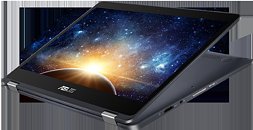
Experience the New Era of Mobile Computing with Galaxy Book S
Samsung Electronics Co., Ltd. today introduced Galaxy Book S, a game-changing mobile computing device built for high-performing users who don't want to be weighed down by excessive size and features of traditional laptops. Built for the new achievers - the innovators, the go-getters, those who do things differently to push themselves forward - Galaxy Book S empowers the next generation of mobile moguls.
With Galaxy Book S, Samsung ushers in a new era of mobile computing with a device that harnesses the mobility and connectivity of a smartphone and the powerful productivity of a PC. Developed in collaboration with leading technology companies, Galaxy Book S takes Samsung's position as a mobile leader and unites it with the best-in-class workforce platform powered by Microsoft and industry-leading mobile performance from Qualcomm. This new category device offers Gigabit LTE connectivity, instant-on capabilities and a premium design, powered by Windows 10 and the cutting-edge Qualcomm Snapdragon 8cx compute platform. With Galaxy Book S, experience the freedom of a new type of mobile device that lets you work anywhere and everywhere, without tethering you to your desk or couch.
With Galaxy Book S, Samsung ushers in a new era of mobile computing with a device that harnesses the mobility and connectivity of a smartphone and the powerful productivity of a PC. Developed in collaboration with leading technology companies, Galaxy Book S takes Samsung's position as a mobile leader and unites it with the best-in-class workforce platform powered by Microsoft and industry-leading mobile performance from Qualcomm. This new category device offers Gigabit LTE connectivity, instant-on capabilities and a premium design, powered by Windows 10 and the cutting-edge Qualcomm Snapdragon 8cx compute platform. With Galaxy Book S, experience the freedom of a new type of mobile device that lets you work anywhere and everywhere, without tethering you to your desk or couch.







